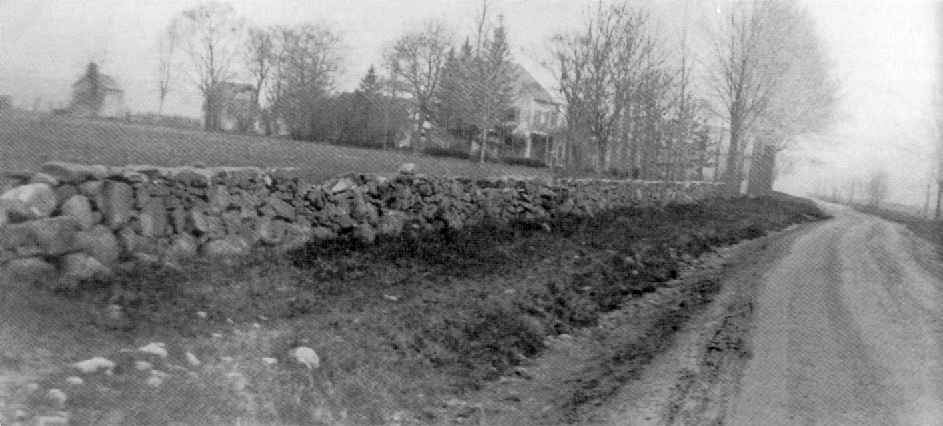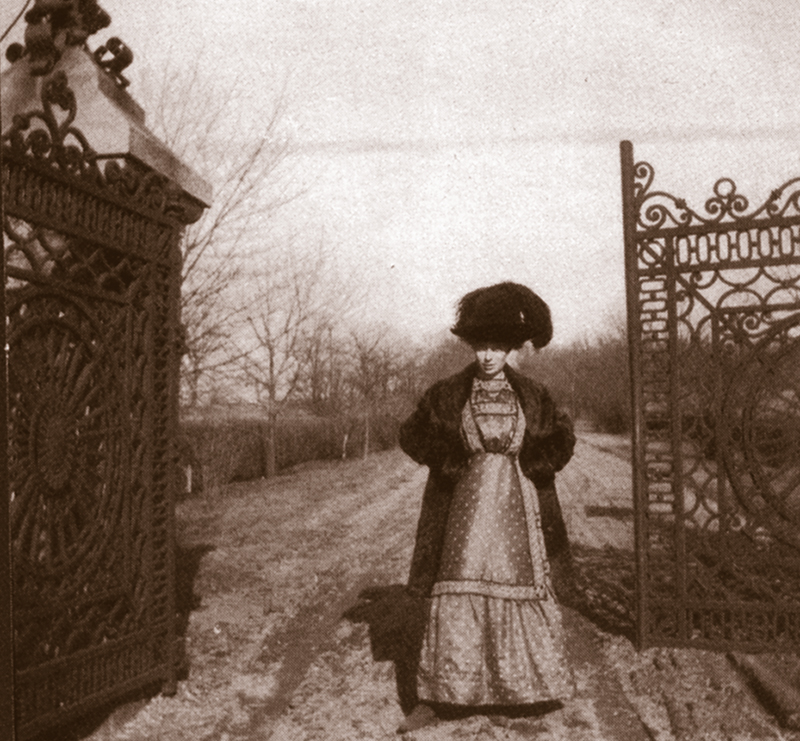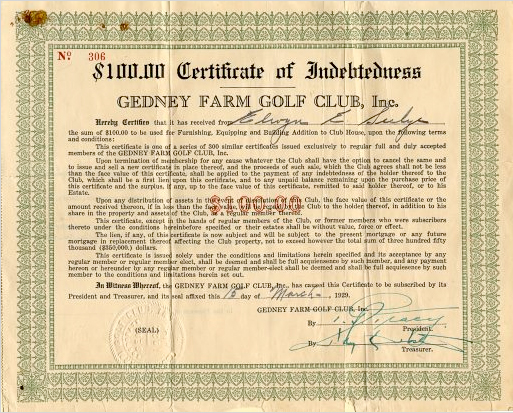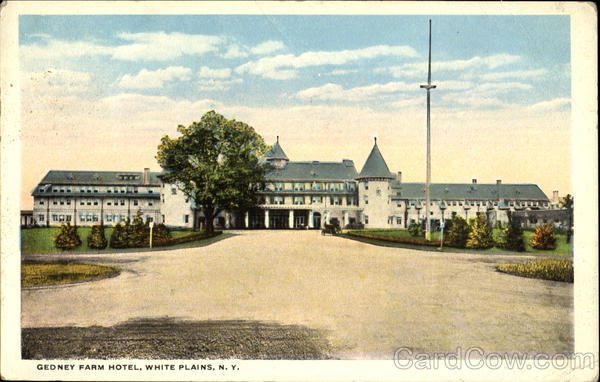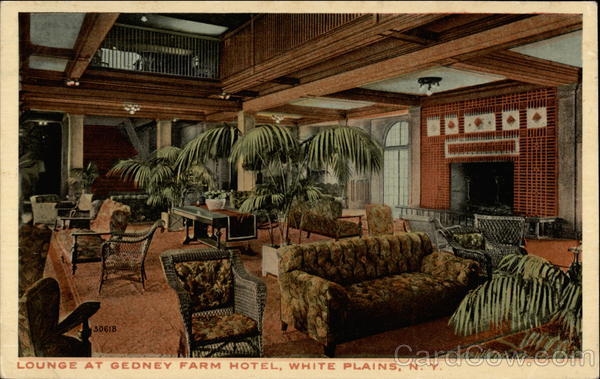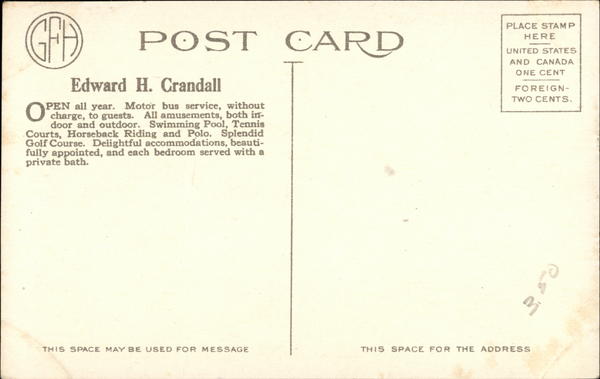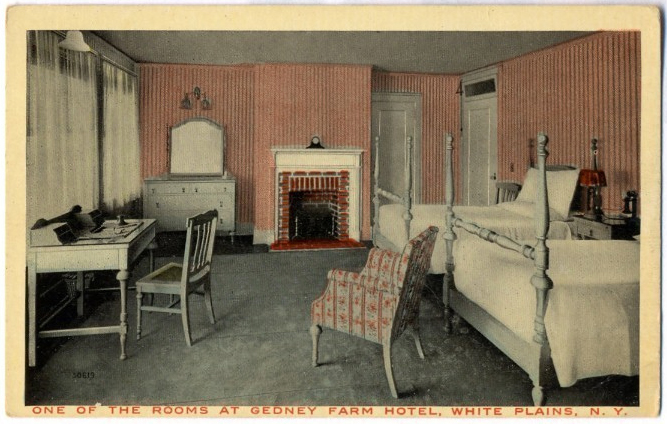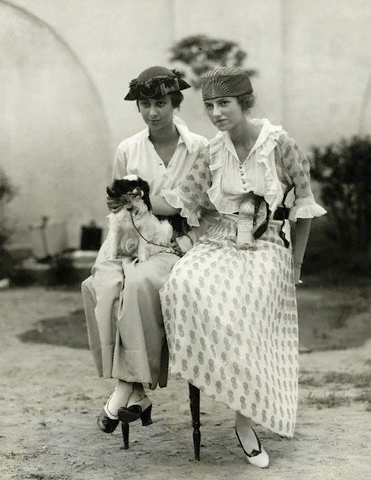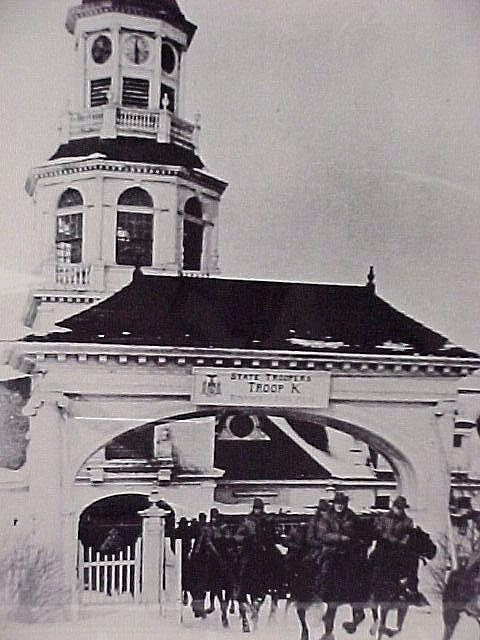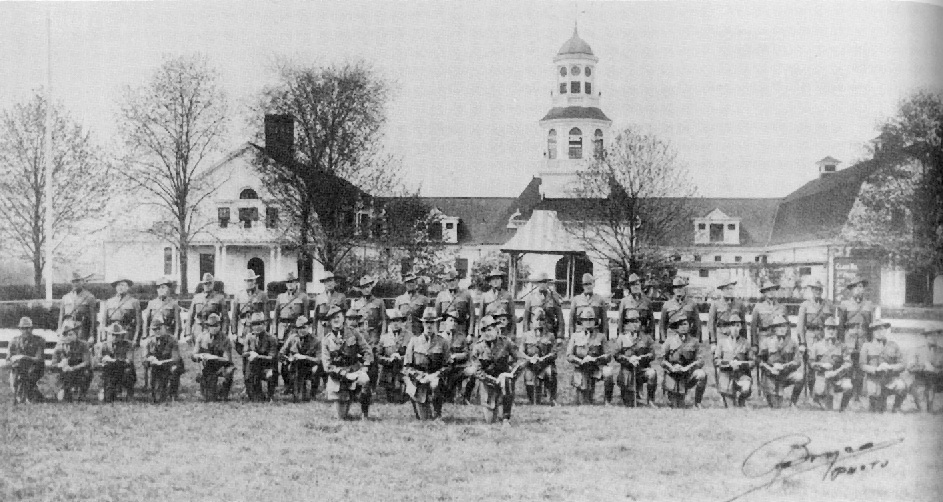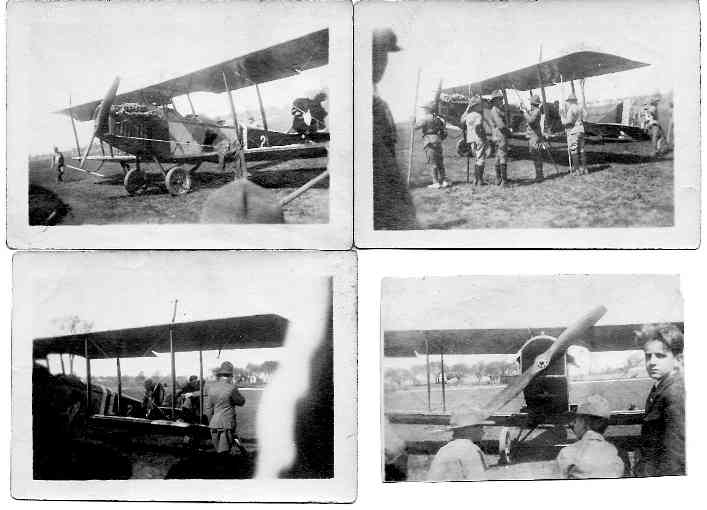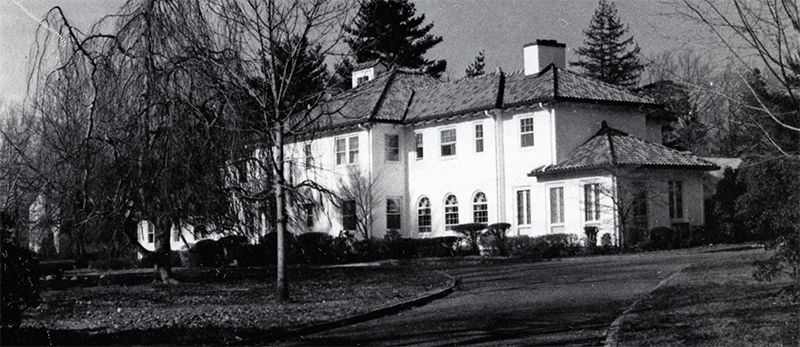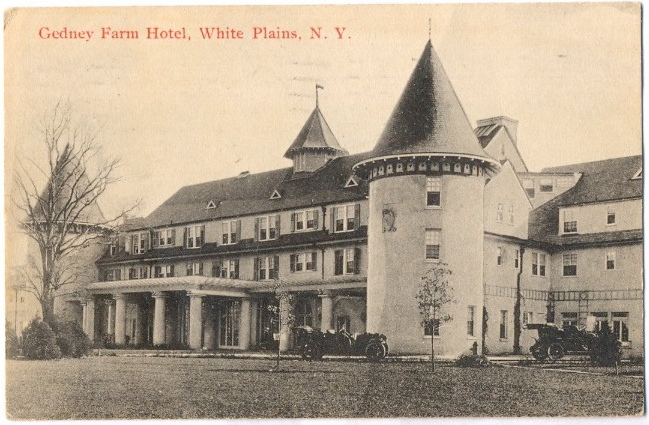History
History of Gedney Farms
The Gedney family were among the original settlers of Salem, Massachusetts. The family patriarch, John Gedney (Sr.), sailed in 1636 out of Yarmouth, England on the Mary Anne. One of his sons, Bartholomew, was one of the judges who presided over the infamous witch trials. Bartholomew’s brother, Eleazar built the Gedney House around 1665, which still stands in Salem.
During the 18th century, the family moved to Westchester County, New York, settling in both Mamaroneck and White Plains.

Captain John Gedney (1836 – 1922)
Gedney Farms Started 1740 (1740-1898)
Gedney Farms in White Plains was founded in 1740 by John Gedney (1695-1766), who bought 116 acres from William Marsh for 400 pounds. By the time of the Civil War, when Bartholomew Gedney (1720-1795) was in possession, it was one of the most productive farms in Westchester and their farmhouse on Ridgeway was one of the finest in the county.
The Gedney family utilized advanced farming techniques. The productivity of the farm was so high that the Russian Commissioner of Agriculture visited the farm to observe it.
In 1847, a new schoolhouse was erected for residents of the Gedney Farms area. The schoolhouse was built on Ridgeway, across from what is now the 18th green at Westchester Hills Country Club. In 1948, the house became a Girl Scout meeting place, and in 1985 it was converted into a private home, which remains today.
The Howard Willets Era (1898-1913)
In 1898 Howard Willets (1861-1938), a commission merchant who was a partner in Willets & Co. at 19 Rector Street, New York, purchased a 250-acre tract in Westchester, naming it for the Gedney family that had owned the property since 1740. Howard did a lot more than play gentleman farmer at Gedney Farm. He showcased his equine and canine stock by driving around town in a carriage with Dalmatian escorts. That quickly defined him as the town eccentric.
On November 14, 1907, The Washington Herald covered the Gedney Model Stock and Dairy Farm. The article detailed a luxurious routine that had lured curiosity seekers from far and wide. “The prize porkers were curried and manicured daily in boudoir style, and the milk-producing Jerseys were housed in a concrete palace with electric lights and steam heat.” Although it lasted less than a decade, Gedney was a grand affair built on audacious decisions.
Willets was deeply involved in both the horse jumping worlds, as well as show dogs. Mr. Willets, at one time, was also president of if the American Kennel Club. One great horse, Heatherbloom, purchased by Mr. Willets from Robert Allan of Montreal, cost the “damn fool price” of $1,000 as a four-year old, but Willets considered his purchase a once-in-a-lifetime bargain for “the greatest jumper that ever entered the show ring.” He was later to turn down an offer from Barnum & Bailey for twenty-five times the purchase price!
Willets sent his new acquisition to Dick Donnelly, a local trainer, to get him started jumping. That fall Willets qualified Heatherbloom with the Westchester Hounds and took him to the old Madison Square Garden, where he won the Middleweight Hunter Championship. Heatherbloom’s official horse show high jump record was 7’10½”, made at Richmond, Virginia, but he is even more famous for two jumps he made unofficially; one at Donnelly’s in 1902 (to permit Harper’s Weekly to take a picture), where he cleared 8’2”, and the other at Willets’ Gedney Farm, where he cleared 8’3” (and, standing back, was 27’ in the air). His jump of 8’3”, if properly certified under the rules, would even today constitute a World Record.
Gedney Farm, at that time, was actually an unmitigated financial disaster. However, in less than a decade, its pastoral charm had become a magnet for tourists. Howard had his failings, but he was a visionary. When any aspect of his life hit the skids, he had no problem thinking outside the box. In reality, he was one of those rare individuals who had trouble doing otherwise. Today, the rustic appeal of remodeled barns is well-known, but the concept was about as far out in left field as you could get a century earlier. He took a gamble and leveraged its visual appeal and accessibility to cash in on the burgeoning mania for country vacations.
On Dec 1, 1909, The New York Times reported:
“FIRE RUINS MANSION ON THE GEDNEY FARM; Loss of Show Place Near White Plains, Owned by Howard Willets.
A Spectacular daylight fire totally destroyed the large manor house on Gedney Farm, White Plains, the country place of Howard Willets, yesterday morning. Fanned by a stiff northwest gale, the flames consumed the building in less than an hour, although the entire Fire Department of White Plains and many of Mr. Willets’ wealthy neighbors fought hard to save it.”
The article points out that Willets purchased the mansion and land some years earlier. The home was four stories and included one hundred rooms and sat at a high point just east of what is now Heatherbloom Road, overlooking a veranda. It states that the mansion was then considered one of the finest in the entire country.
In 1920, Willets appointed L. Ward Prince of Prince & Ripley as general sales agents for the new Gedney Farm subdivision. The property comprised over 300 acres, exclusive of a new golf club, was thought to be an ideal location for a ‘high-class’ home community, with a luxury hotel and a golf course as centers of attraction. Mr. Prince organized the Gedney Farm Building Company which contracted to buy $100,000 worth of land and improve it immediately with homes. It was reported that each home would have approximately one-half acre of land and will be so placed as to allow purchaser to add more land if desired and that ‘many new architectural and equipment features will be incorporated.’
On April 10, 1938, Howard Willets died in his home, at what was then 10 Oxford Road, Gedney Farm. That home was built in 1909 after the mansion fire and the address today is 25 Hathaway Lane.
The Gedney Farm Hotel Era (1912-1924)
In 1912, Gedney Farm was sold to Robert Farley, a wealthy lawyer and land developer. He was a cousin of the twenty-seventh US Vice President James Sherman, who served under President William Howard Taft. Farley’s many real estate developments included the Greenacres neighborhood in Scarsdale. He was the organizer and first President of the Gramatan National Bank in Bronxville in 1909 and held numerous board positions, including President of the New York Rotary Club and President of the White Plains YMCA.
Farley continued to convert the farmland into the residential area that is known today as Gedney Farms. The residential development was referred to as a “cottage colony,” with thirty plots in the first plan. He built a new resort hotel called the Gedney Farm Hotel on the property now bounded by Gedney Esplanade and Hotel Drive. The 300-room hotel was designed by Kenneth Murchison, who was just hitting his stride as an American architect. Styled after a French chateau, the resulting Gedney Farm Hotel featured long wings, a turreted front, modern elevators, and 300 guest rooms with private baths. Amenities included a barber shop, grocery store, formal ballroom with hardwood floors and electric lights, a billiard room, indoor pool, ice rink, bowling alley, squash courts, formal gardens and tennis courts. The Gedney Country Club down the road, offered an 18-hole golf course, polo fields, kennels and a stable of riding horses and polo ponies.
When it was founded in 1913, Westchester Hills Golf Club was originally the golf course for guests of the Gedney Farm Hotel, also known as the “Saratoga of Westchester County”. A beach club at Oakland Beach in Rye was associated with the hotel. Celebrities including Douglas Fairbanks, Mary Pickford, and Eddie Cantor patronized the hotel. The surrounding cottage community was allowed to use the hotel facilities.
The Gedney Farm Hotel in White Plains, one of the best-known hostelries in Westchester County, was virtually destroyed by a fire that started at 8:45 pm on September 20, 1924 and was still blazing fiercely early the following morning.
Also notable was that when the New York State Police (Troopers) was first formed in the early 1900’s, based on an incident that occurred in Westchester, the first home of the New York State Police in the region was the Gedney Farms Estate, which was the Troop “K” Headquarters from the fall of 1917 until it was destroyed by fire in 1924. At the time, Troop “K” patrolled the entire Hudson Valley and Long Island, from the Catskills to the Hamptons.
History of Street Names
BURLING AVENUE
The first two people to buy lots in Gedney Farm were banker and county treasurer (and later state senator) George Burling and his son John on this road, in 1913. L. Ward Prince, part of the Prince & Ripley group who developed Gedney Farms, was married to George’s daughter Caroline. It was made a public street in 1924.
GEDNEY PARK DRIVE
Built along a stretch of land beside Mamaroneck Ave., which was intended as park land in 1913 (and dedicated as such in 1924 when the road was made public), it was originally known simply as Park Drive. However, when the second Gedney Circle was renamed Glendon Circle in 1934, the Common Council obviously felt having only four streets named Gedney was insufficient, so they added the Gedney name to this road.
GEDNEY ESPLANADE
Built in 1913 as part of the Gedney Farms neighborhood, it connects Mamaroneck Avenue with Hathaway Lane. Esplanade means “a public ground for walking”, and the road was built with a grass divider for walking between the north and south portions of the road. The part of the road east of Macy Avenue and Hotel Drive was originally known as Wellington Road and that part was renamed in 1947 to conform to the rest of the street. It was accepted as a public road in 1924 (original section) and 1927 (Wellington Road section).
HEATHERBLOOM ROAD
Heatherbloom was a champion high jumping horse owned by Howard Willets, who lived in Gedney Farms prior to the development of the area for housing.
HATHAWAY LANE
Named for another of Howard Willets’s horses, this one a racing horse, it originally provided access to Gedney Farm from North Street and was built into a road in 1913. The eastern portion was blended into Bryant Avenue in 1934, so it now terminates at Bryant. It was accepted as a public road in 1927 from Ridgeway up to what is now Heather Lane.
HOTEL DRIVE
This was originally the driveway to the Gedney Farm Hotel.
MURCHISON PLACE
Named after Kenneth Murchison, architect of the Gedney Farm Hotel.
